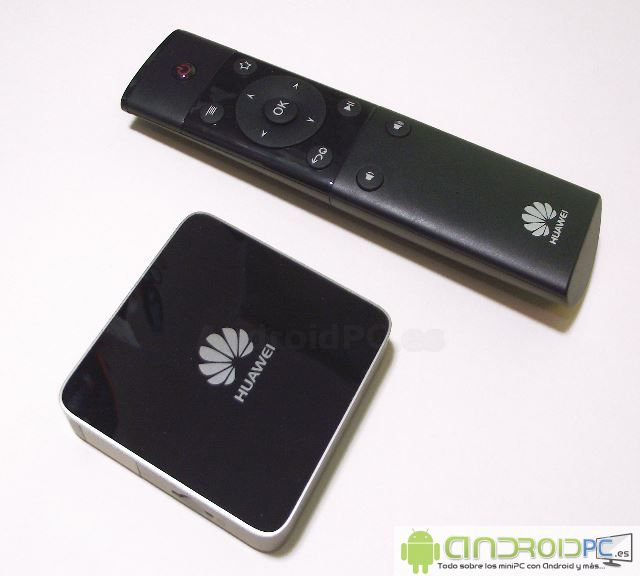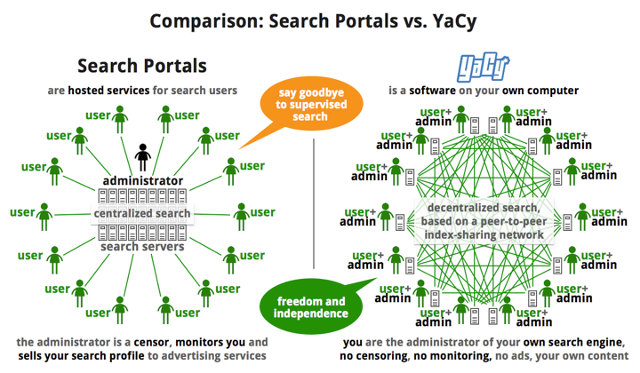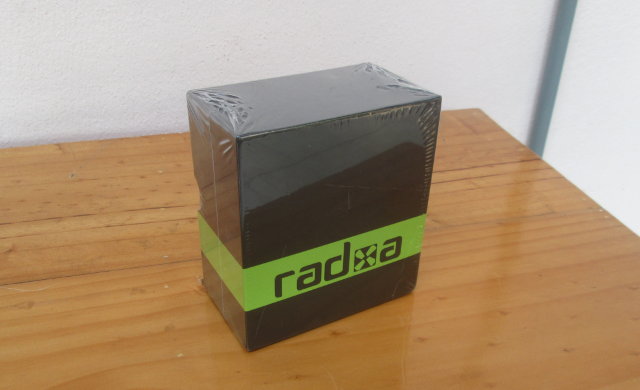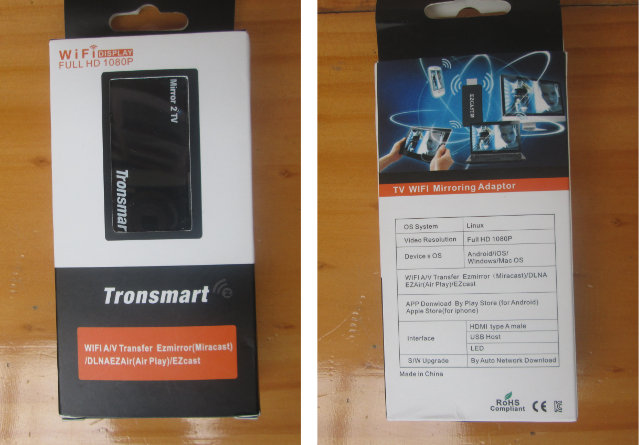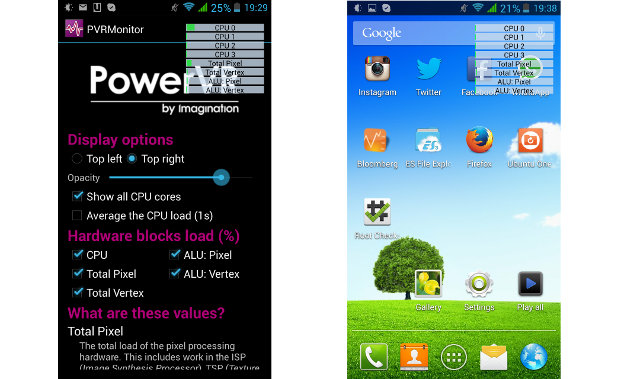Huawei MediaQ M310 is an Android set-top box powered by HiSilicon K3V2 quad core SoC. AndroidPC.es have just written a review of the device in Spanish, and since it’s one of the only media player based on this processor, which also include a Vivante GC4000 GPU, I’ll translate some of the most interesting bits, but you can find many more pictures and screenshots on the original article. MediaQ M310 Unboxing Let’s remind us of the specifications first: SoC – Hisilicon K3V2 Quad-core ARM Cortex A9 processor with Vivante GC4000 GPU System Memory – 1GB RAM Storage – 4GB Flash + microSD card slot Video I/O – 1x HDMI In,1x HDMI Out Audio I/O – HDMI, SPDIF, 3.5mm stereo jack, Mic mono USB – 2x USB 2.0 (1 extension from Y cable) + 1x micro USB Connectivity – 802.11 b/g/n 2.4G/5G 2×2MIMO, Bluetooth 4.0 Beside the device and the Bluetooth remote […]
Linaro 14.01 Release with Linux Kernel 3.13 and Android 4.4.2
The first release of the year, Linaro 14.01, is now out with Linux Kernel 3.13 (baseline), Linux Kernel 3.10.28 (LSK), Android 4.4.2, and Ubuntu Linaro 14.01. The most important part of this release is support for Arndale Octa, which makes big.LITTLE processing code available to a low cost platform. Android 4.4.x is now on par with Android 4.3 in terms of support. Linaro has also decided to provide quarterly stable released with GCC, and Linaro GCC 4.7-2014.01 is the first quarterly stable release with the next one planned with Linaro 14.04. Here are the highlights of this release: Linaro Stable Kernel (LSK) 3.10.28-2014.01 with latest version of GTS patch set for big.LITTLE, and Android support Linux Linaro 3.13-2014.01: gator version 5.17 updated linaro-android-3.13-merge topic by John Stultz, the “Revert “PM / Sleep: Require CAP_BLOCK_SUSPEND to use wake_lock/wake_unlock” patch included uprobes v4 updated big-LITTLE-pmu topic from ARM Landing Team (LT) updated […]
Yacy P2P Non-Tracking Search Engine and YaCyPi Linux Distribution for Raspberry Pi
With the revelations by Edward Snowden of NSA’s large scale spying programs, people have become more and more aware that there’s very little privacy online, and in 2013 several companies have tried to solve this online privacy issue, by launching services and products such as Onion Pi and Safeplug Tor Server, or even the recently announced privacy-focused Blackphone. One of the best way to get tracked is to use Google or Bing search engines, which use your search data to deliver relevant ads. Yacy, a peer-to-peer search engine, tries to solve this issue. You can install it on your computer, and you’ll soon be able to run YaCyPi on your Raspberry Pi. The search engine is described as follows: YaCy is a free, as in open source, search engine that anyone can use to build a search portal for their intranet or to help search the public internet. When contributing to […]
Raxda Rock Development Board Unboxing, Quick Start Guide, and Benchmarks
Radxa Rock is an Android & Linux development board based on Rockchip RK3188 with 2GB RAM, 8GB NAND Flash, several I/Os that’s been available in beta version to a small number of developers in September 2013, with general availability starting at the very end of December 2013. Radxa team has sent me a board for me to try out. I’ll start with some unboxing pictures, write a Quick Start Guide for the first boot with Android 4.2.2, and run some benchmarks on the board. In another post, I’ll try some of the instructions to build Android and Ubuntu for the platform. Radxa Rock Unboxing Pictures & Video I’ve received the board in the following package via Fedex. Beside the board, we’ve got a Wi-Fi antenna, a USB power cable, and a plastic casing. Checkout Radxa Rock unboxing video below, if you want to find out exactly what’s you get when […]
Linaro 13.12 Release with Linux Kernel 3.13, Android 4.4, and Ubuntu Saucy Salamander
Due to the end of year celebration, Linaro release is a little earlier at this time, and Linaro 13.12 has already been released with Linux Kernel 3.13-rc3 (baseline), Linux Kernel 3.10.24 (LSK), Android 4.4, and Ubuntu Linaro 13.12, which for the first time is based on Ubuntu 13.10 Saucy Salamander. Other interesting development include an initial arm64 Ubuntu saucy rootfs (that one?), work to support octa-core 4x Cortex A53, 4x Cortex A57 SoCs, an Android 4.4 KitKat LEB for the Galaxy Nexus, and ARMv8 LSK and Nexus7_2013-AOSP builds have been setup and Android can be now built using llvm-clang toolchain with the related patches submitted to upstream. On a related note, there are also some Midway and Highbank engineering build images for Calxeda server processors, which may not be that useful going forward, as unfortunately the company has just closed door after running out of cash. Here are the highlights of this […]
Droid Translator Performs Live Translation of Skype and Mobile Calls and Chats
When you go to a foreign country, you may end up staying in places where nobody can speak the languages you know. TIW (Technology Improves the World), an IT company based in Czech Republic, is trying to problem a solution to this problem with Droid Translator, an Android that leverages Google’s Android speech-to-text, voice recognition, and translation technology to translate live text or audio chats or even Skype or mobile calls. I gave it a quick try. First you need to have Skype installed on your device, and a Skype, as Droid Translator will import your Skype contacts. There’s the Free version linked above, and a PRO version for about $6.5. The free version only support DT chat (text and audio chat), and the paid version adds Mobile, and Skype calls (Audio and Video) support. The following language are said to be supported: English, Arabic, Bulgarian, Catalan, Czech, Chinese Simplified, […]
Tronsmart T1000 Mirror2TV Review with Android and Windows XP
Tronsmart T1000 Mirror2TV is an EZcast HDMI dongle that connects to your TV, supports Miracast, DLNA, and Airplay, and sells for just $30 including shipping. I’ve just received a sample from Geekbuying, and I’ll post some pictures first, followed by a review with ThL W200 Android 4.2 smartphone, and Acer Aspire One D255 netbook running Windows XP. Tronsmart T1000 Unboxing Pictures The package shows it is a Wi-Fi display adapter supporting Windows, Mac, iOS, and Android. Beside the dongle, there’s just a user’s manual (that I did not read, shame on me), and a funny USB wit a microUSB plug at one end, and a Wi-Fi module, and USB plug to connect to your TV or a power adapter at the other end. Since the Wi-Fi module is outside the dongle is much smaller than Android HDMI TV Sticks for example. Another advantage might be better Wi-Fi reception, as if […]
PVRMonitor Displays real-time CPU and GPU performance for PowerVR enabled Android Devices
Imagination Technologies has some advanced tools such as PowerVRTune in their Powervr Graphics SDK, but they’ve now released a simple tool called PVRMonitor to display real-time CPU and GPU usage for Android devices featuring PowerVR GPUs. In some firmware, Android’s Developer Settings have options to enable CPU and GPU usage, but in my phone for example, this is not available, so this app may be handy to check whether your system or app is taking too many resources. Inside the application, you can select the overlay position, whether to show all CPU cores with CPU load averaged over 200ms, or over one second. You can select five hardware blocks to display: CPU Total Pixel – Load in percent of the pixel processing hardware including texturing, raster operation and fragment shader processing. If nothing is modified on the screen it should be zero, and if it is too high during games […]


